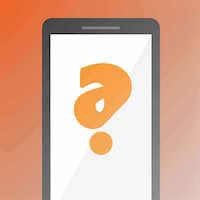
First Quarter Periodical Test in Oral Communication in Context
Quiz by Carla Mae SORIANO
Feel free to use or edit a copy
includes Teacher and Student dashboards
Measure skillsfrom any curriculum
Tag the questions with any skills you have. Your dashboard will track each student's mastery of each skill.
- edit the questions
- save a copy for later
- start a class game
- automatically assign follow-up activities based on students’ scores
- assign as homework
- share a link with colleagues
- print as a bubble sheet
- Q1
The following statements describe the nature of communication and its process, except?
it occurs between two or more people
it came from a Latin word “communicare” which means to share
it occurs in anon-verbal form
it is a continuous and dynamic interaction, both affected by many variables known as the elements of communication
45s - Q2
What effective communication strategy requires clear, well-articulated and concise words to come out of our mouth?
showing empathy
asking questions
active listening
speaking with clarity
45s - Q3
What is the best reason for a speaker to support his statements with facts and relevant figures?
To get respect from the audience
To sound expert and confident
To make sure messages are not easily misinterpreted
To make sure that the speech is complete
45s - Q4
It is a process of exchanging ideas, thoughts, knowledge, and information such that the purpose or intention is fulfilled in the best possible manner.
effective communication
active listening
showing empathy
communication skills
45s - Q5
How to speak with clarity when giving an explanation or instruction?
Articulate terms that are not familiar with your listeners
Speak fast to save time
Whisper confidential information to your audience
Prolong your speech to make sure you are giving all the details
45s - Q6
Active listening is one of the effective communication skills. It can be manifested in the following, except?
Showing non-verbal cues such as nodding and eye contact
Asking question about the statements you heard
Giving a response whenever speaker asks
Interrupting the speaker
45s - Q7
In the 7 Cs of Effective Communication Strategies which states that message must be supported with specific facts, figures, and real-life examples and situations?
courtesy
correctness
consideration
concreteness
45s - Q8
What type of listener is interested in the message itself, whether it makes sense, what it means, and whether it’s accurate?
time-oriented listener
content-oriented listener
people-oriented listener
action-oriented listener
45s - Q9
What effective communication strategy is referred to as paying attention to the details given by the communicator?
active listening
showing empathy
speaking with clarity
asking questions
45s - Q10
Which of the following best shows “consideration” as characteristic of an
effective communication?
Greet and smile at the audience before the speech
Give all the details of the topic to avoid questioning
Use of simple terms that everybody can understand
Be firm with your principles and beliefs
45s - Q11
A communication model that deals with exchange of ideas and messages taking place both ways from sender to receiver and vice-versa.
interactive model
integrative model
linear model
transactional model
45s - Q12
Among the 7 Cs of effective communication strategies, which avoids grammatically wrong statements to show credibility and effectiveness of the message?
correctness
consideration
conciseness
courtesy
45s - Q13
This is an accidental and automatic brain response to sound that requires no effort.
listening
speaking
giving feedback
hearing
45s - Q14
Showing empathy is another skill in effective communication. Which of the
following statements show this skill after the speaker shared his personal
experience in business mistakes?
“No, you must have been kidding.”
“There’s no way to make it work, please move on.”
“You should have learned your lesson.”
“It’s really challenging to put up a business.”
45s - Q15
Teacher A was discussing tips on how to write a speech. The learner raised her hand for a question. Which part of the process of communication is that?
Feedback
Message
Receiver
Channel
45s